Common Name(s): Katalox, Mexican ebony
Scientific Name: Swartzia cubensis
Distribution: Southern Mexico, Central America, and northern South America
Tree Size: 100–130 ft (30–40 m) tall,
2–4 ft (.6–1.2 m) trunk diameter
Average Dried Weight:AVERAGE DRIED WEIGHT
Density is the measurement of a wood’s weight per unit volume. Here, "dried weight" specifically refers to wood at 12% moisture content, and values are given in pounds per cubic foot and kilograms per cubic meter. Also keep in mind that density commonly varies by +/- 10% from the average.
Click on the link "Average Dried Weight" for more details. 71.6 lbs/ft3 (1,150 kg/m3) Very High WEIGHT TIERS
Extremely Low: 0+ kg/m3
Very Low: 420+ kg/m3
Low: 520+ kg/m3
Medium-Low: 620+ kg/m3
Medium: 730+ kg/m3
Medium-High: 840+ kg/m3
High: 960+ kg/m3
Very High: 1,080+ kg/m3
Extremely High: 1,200+ kg/m3
Tiers are based on CSIRO provisional strength groupings (SD1-SD8) based on density.
Janka Hardness:JANKA HARDNESS
This test measures a wood’s resistance to indentation, and is the pounds of force (or Newtons) required to embed a .444" (11.28 mm) diameter steel ball halfway into the wood. Values are for side grain, measured at 12% MC.
Click on the link "Janka Hardness" for more details. 3,660 lbf (16,260 N) Very High JANKA HARDNESS TIERS
Extremely Low: 0+ N
Very Low: 2,050+ N
Low: 3,150+ N
Medium-Low: 4,480+ N
Medium: 6,280+ N
Medium-High: 8,380+ N
High: 11,080+ N
Very High: 14,000+ N
Extremely High: 17,450+ N
Tiers are derived from CSIRO provisional strength classifications (SD1-SD8) in conjunction with the USDA's estimated hardness based on density.
Modulus of Rupture:MODULUS OF RUPTURE
Sometimes called bending strength, this test measures a wood’s strength before breaking (i.e., rupturing). Values are given in pounds of force per square inch and megapascals, measured at 12% MC.
Click on the link "Modulus of Rupture" for more details. 28,010 lbf/in2 (193.2 MPa) Extremely High MOR TIERS
Extremely Low: 0+ MPa
Very Low: 45+ MPa
Low: 55+ MPa
Medium-Low: 65+ MPa
Medium: 78+ MPa
Medium-High: 94+ MPa
High: 110+ MPa
Very High: 130+ MPa
Extremely High: 150+ MPa
Tiers are based on CSIRO strength classifications (SD1-SD8).
Elastic Modulus:MODULUS OF ELASTICITY
This test measures the wood’s level of deformation when under a given load. Higher values indicate less deformation (i.e., stiffer). Values are given in pounds of force per square inch and gigapascals, measured at 12% MC.
Click on the link "Elastic Modulus" for more details. 3,715,000 lbf/in2 (25.62 GPa) Extremely High MOE TIERS
Extremely Low: 0+ GPa
Very Low: 7.9+ GPa
Low: 9.1+ GPa
Medium-Low: 10.5+ GPa
Medium: 12.5+ GPa
Medium-High: 14.0+ GPa
High: 16.0+ GPa
Very High: 18.5+ GPa
Extremely High: 21.5+ GPa
Tiers are based on CSIRO strength classifications (SD1-SD8).
Crushing Strength:CRUSHING STRENGTH
Also called compression strength, this test measures the maximum stress sustained before failure. Force is applied parallel to the grain (producing stress akin to chair legs). Values are given in pounds of force per square inch and megapascals, measured at 12% MC.
Click on the link "Crushing Strength" for more details. 15,240 lbf/in2 (105.1 MPa) Extremely High CRUSHING STRENGTH TIERS
Extremely Low: 0+ MPa
Very Low: 30+ MPa
Low: 36+ MPa
Medium-Low: 41+ MPa
Medium: 47+ MPa
Medium-High: 54+ MPa
High: 61+ MPa
Very High: 70+ MPa
Extremely High: 80+ MPa
Tiers are based on CSIRO strength classifications (SD1-SD8).
Shrinkage:SHRINKAGE
These values represent the percentage change in radial and tangential faces of the wood—as well as the total (volumetric) shrinkage—as the moisture content goes from green (maximum) down to oven-dry (minimum), approximating the wood's stability with changes in humidity. T/R ratio helps to estimate the uniformity of the shrinkage across different wood faces.
Click on the link "Shrinkage" for more details. Radial: 3.9%, Tangential: 7.6% High SHRINKAGE TIERS
Very Low: 0%+
Low: 3.6%+
Medium: 5.1%+
High: 6.6%+
Very High: 8.1%+
Tiers are based on tangential shrinkage (green to oven-dry) from CSIRO shrinkage classifications (1-5).
Volumetric: 11.2%, T/R Ratio: 1.9
Color/Appearance: Heartwood is dark reddish brown to nearly black, sometimes with a strong purple hue. Sapwood is sharply demarcated and is pale yellowish white. Pieces with curly or wavy grain are not uncommon.
Grain/Texture: Grain is usually straight, but can also be irregular or interlocked. With a fine even texture and good natural luster.
Rot Resistance: Varies depending upon species, but generally very durable. Heartwood is usually considered to have a high resistance to decay and termites; though it is susceptible to marine borers.
Workability: Katalox is typically considered difficult to work on account of its high density. The wood has a moderate to high blunting effect on cutters, and if there is interlocked grain present, tearout can occur during planing. Can be troublesome to glue because of its high density and natural oils present.
Odor: Katalox has a very faint odor when being worked.
Allergies/Toxicity: Katalox has been reported to cause respiratory irritation in some individuals. See the articles Wood Allergies and Toxicity and Wood Dust Safety for more information.
Pricing/Availability: Usually available in turning squares or as figured lumber (generally with a large amount of sapwood present). Expect prices to be in the mid to upper range for an imported tropical hardwood.
Sustainability: This wood species is not listed in the CITES Appendices or on the IUCN Red List of Threatened Species.
Common Uses: Inlays, fine furniture and cabinetry, parquet flooring, guitars, turnings, and other small specialty items.
Comments: Katalox has exceptional strength properties, and is among the very stiffest and strongest woods available worldwide. Its dark color makes it a popular substitute for ebony, and the wood is sometimes called Mexican royal ebony, though it is not a true ebony in the Diospyros genus.
Images: Drag the slider up/down to toggle between raw and finished wood.
A special thanks to Tim Deahl for providing the photo of the katalox and avodire box.
Identification: See the article on Hardwood Anatomy for definitions of end grain features.
Porosity:POROSITY
Specifies the overall pore structure (ring-porous, semi-ring-porous, or diffuse porous), and notes if annual growth rings may still be seen even for diffuse porous hardwoods.
Click on the link “Porosity” for more details. diffuse porous; growth rings not distinct
Arrangement:ARRANGEMENT
Describes the more individual pore arrangements found throughout the end grain surface, such as solitary, multiples, chains, clusters, etc.
Click on the link “Arrangement” for more details. solitary and radial multiples
Vessels:VESSELS
Describes the relative size and frequency of the pores (vessels), as well as any contents found in the pores, such as tyloses, colored mineral deposits, etc.
Click on the link “Vessels” for more details. medium to large, moderately few to few; amber and reddish brown heartwood deposits common
Parenchyma:PARENCHYMA
Describes the pattern(s) of the parenchyma cells seen on the endgrain, such as vasicentric, aliform (winged or lozenge), confluent, and banded.
Click on the link “Parenchyma” for more details. winged, confluent, and banded
Rays:RAYS
Describes the relative width and frequency of the rays (appearing as thin vertical lines on the endgrain), as well as a note on if these rays are visible with/without magnification.
Click on the link “Rays” for more details. narrow width, close spacing; rays aren’t visible without magnification
Lookalikes/Substitutes: Darker pieces of katalox can sometimes be confused with (and used in place of) true ebony (Diospyros spp.).
Notes: None.
(Species)
(Authority)
Related Content:

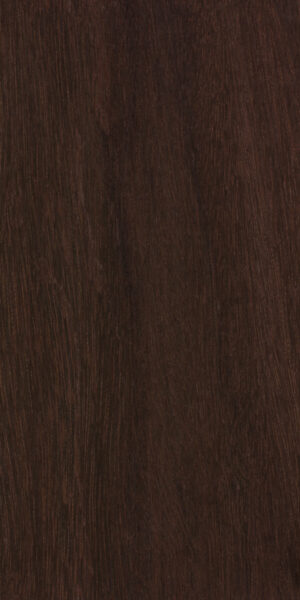
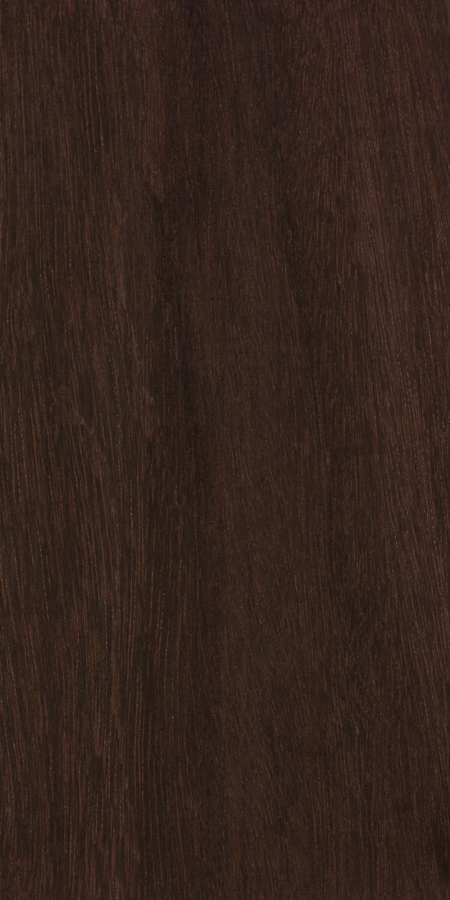
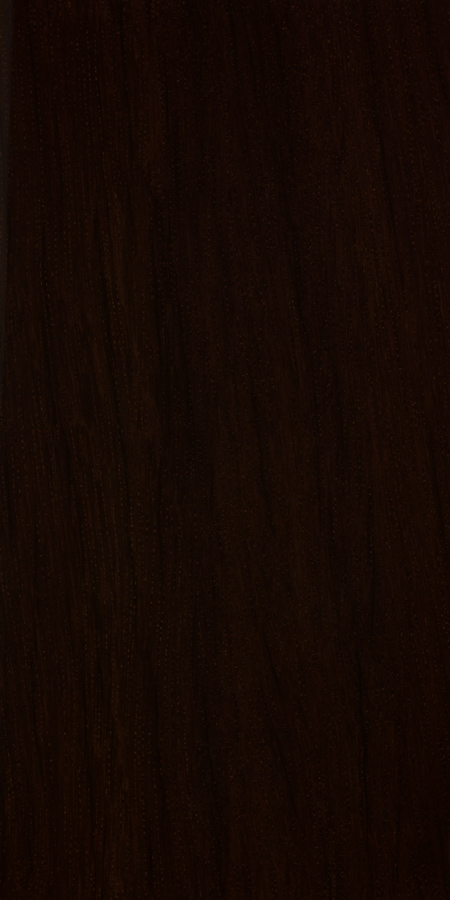

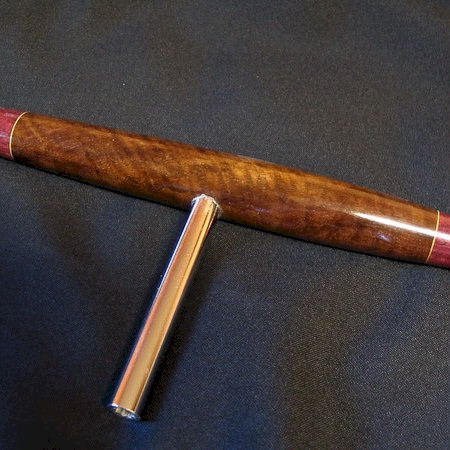
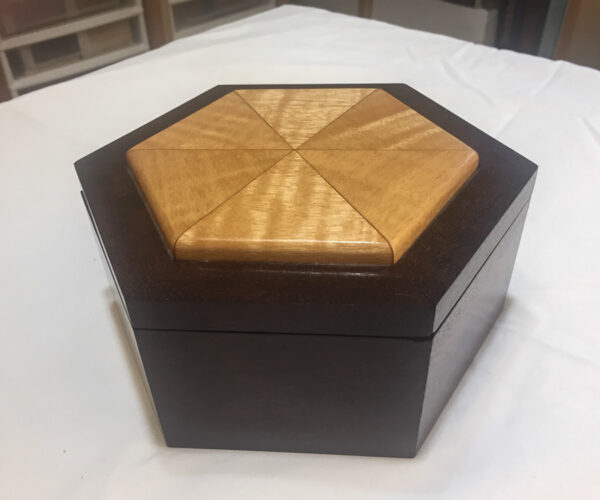
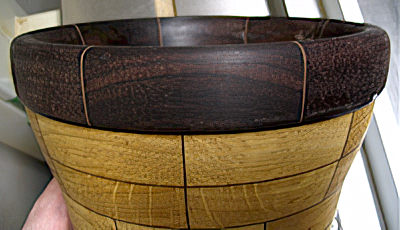
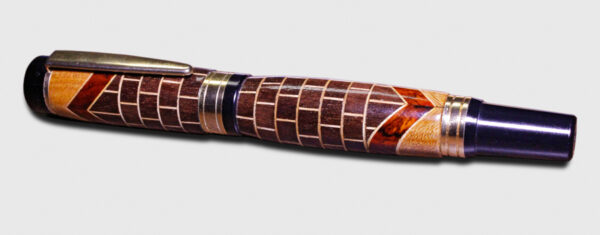
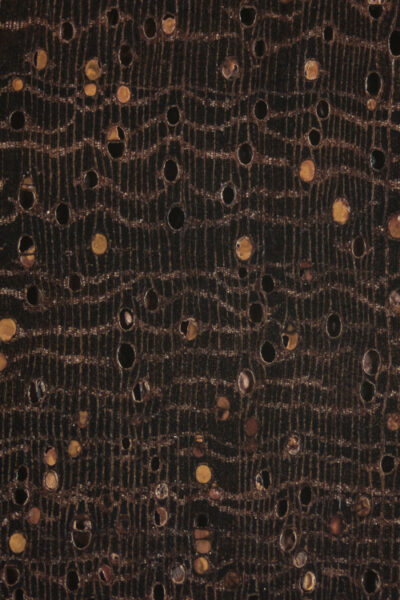

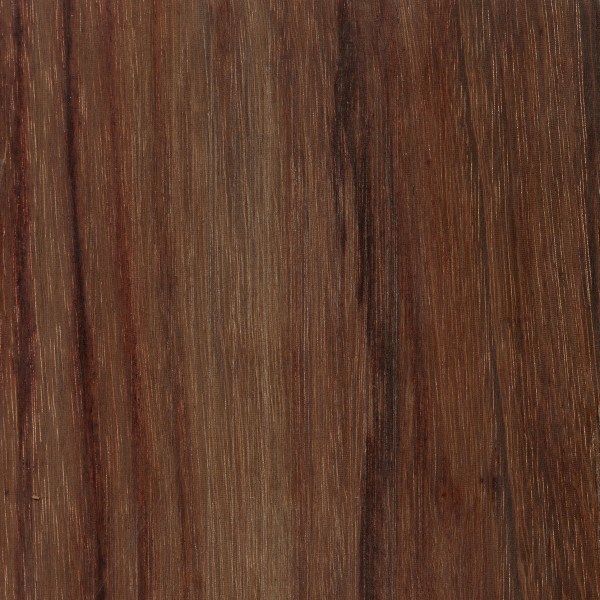
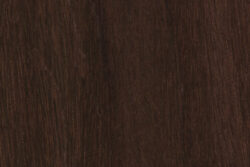
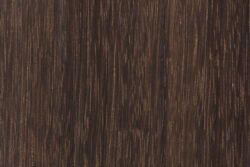
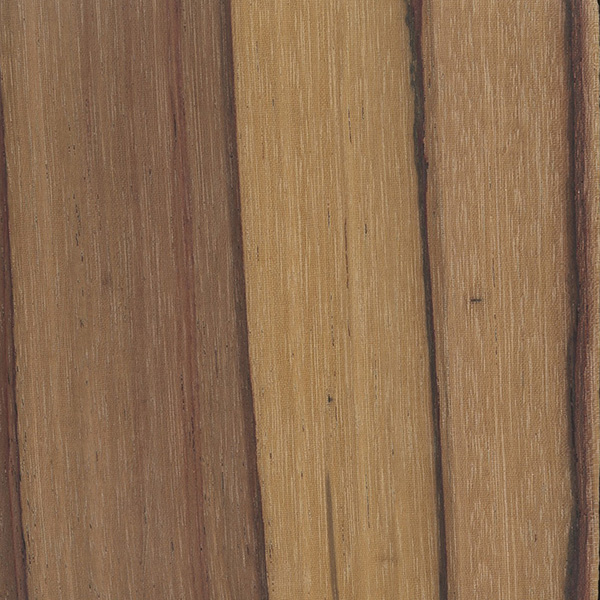
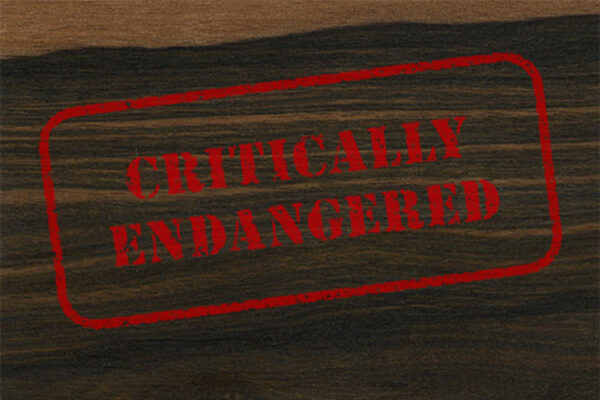
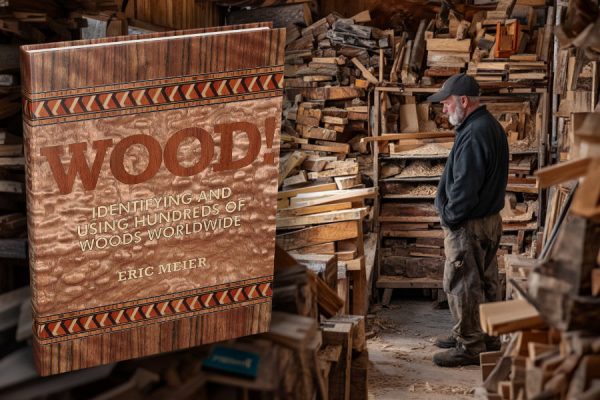
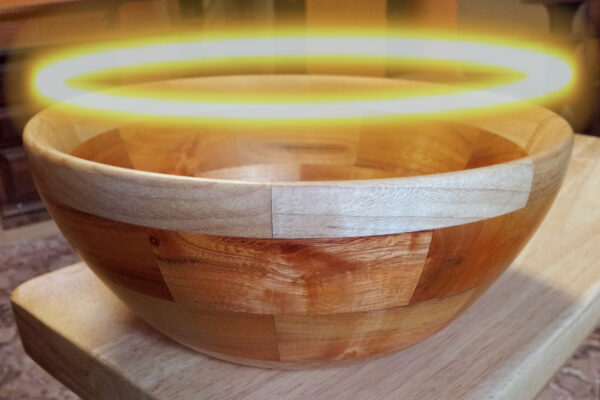
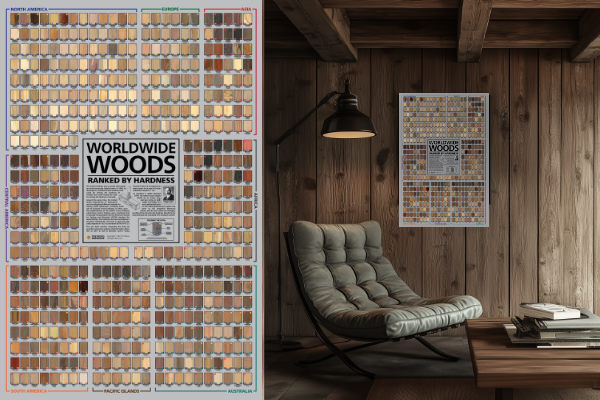
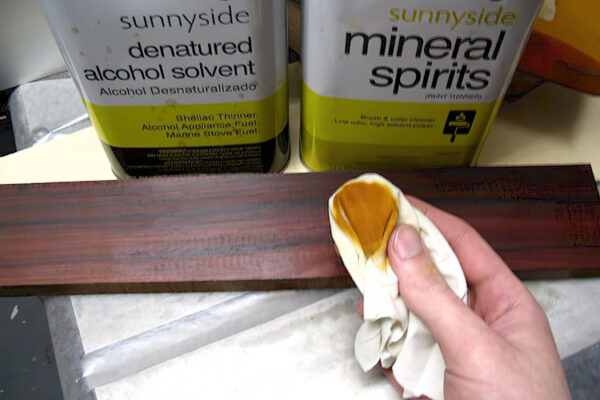
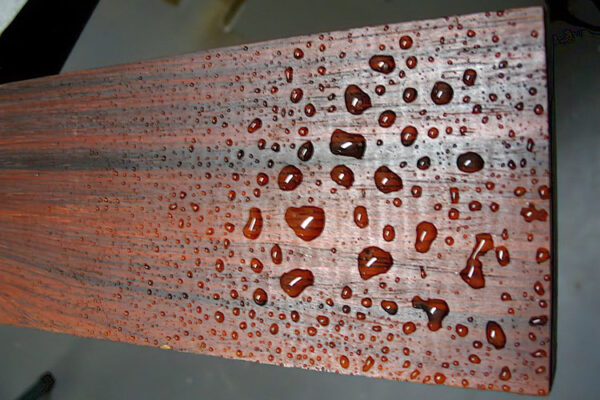
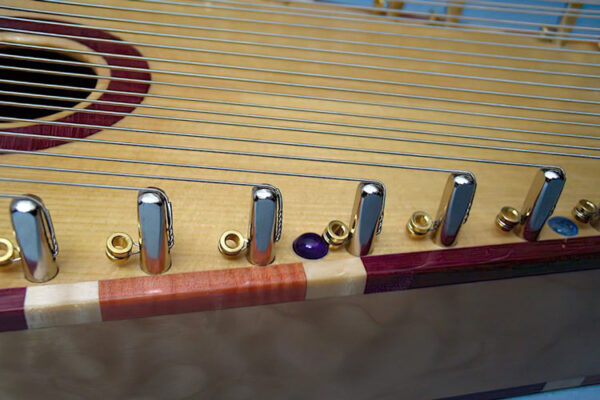
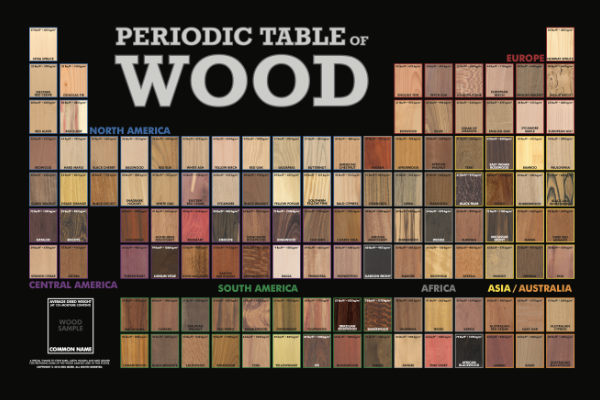
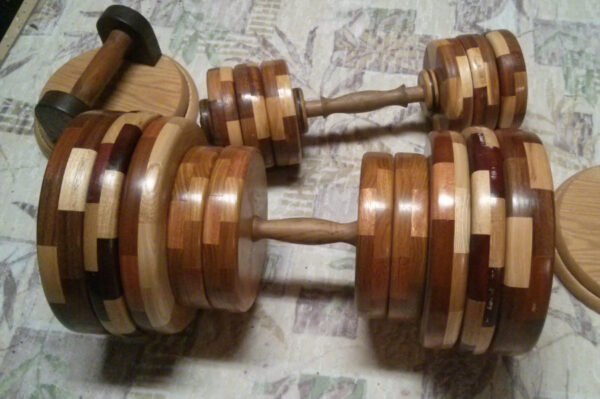



When working with Mexican Royal Ebony, I’ve found it less difficult to shape the wood by wet sanding it with 60 and 80 grit. Also, while mineral spirits can help with edge-gluing, I found that scoring the edge you are gluing with a small pullsaw, a Shinto rasp, or a very coarse/rough file really, REALLY helps give it more surface area for the glue to hold to. This method really works well with any oily woods, really. I discovered this when I decided to add katalox and some other oily woods to my cutting boards this Christmas. To avoid voids,… Read more »
I bought a piece of Katalox today. I want to use it for a rifle stock butt plate. How is the best way to attach it to the stock?
PRS guitars made necks out of Katalox on some models. Very hard and apparently difficult to work with in that it dulls tools easily. Makes for a very smooth playable and stable guitar neck.
Can someone answer a question for me? Information I’ve read on Katalox says as it ages that it turns darker almost black. Anyone have an idea of how long that process takes?
Late reply but other people might be interested. I’ve been working with katalox the last few months, chunky boards I cut into are orange/pink in the middle, see pic, although where cracks run down and through the wood the colour around them is almost black, which can look really good. More generally you’ll see a fair bit of colour change over a few days, perhaps a week before it fully slows down, thought I suspect it will slowly carry on changing for months if not years. I’ve immediately oiled and waxed pieces after carving and seen them continue to change,… Read more »
Hey rob,
Do you think this wood would make an excellent axe handle given the mechanical properties? ONly concern might be the schock it may transmit in the axe handle to your hands from chopping and wood splitting. I intend to use it for a sledge axe. Would look epic!
Well it’s definitely strong enough! But at least on the pieces I have, the grain is often not straight, so thats something to look out for. How the wood handles vibration, not something I could comment on too much, but I suspect it wouldnt have much damping in it. Probably have to try it to find out…
I have two katalox guitar neck blanks, bot with a slight bow. Do any of you guys know of any good ways to straighten these things out without having to remove any material? The blanks are about 40 inches long, and around 3/4 of an inch thick. Any help would be greatly appreciated
Steam bending. Check YouTube videos
I’m trying to use it as a headstock cap and so far my suggestion is to set them afire and be done with it. This is the worst wood I have ever used for anything. Straight up. I can’t say anything nice about whoever introduced this wood to the industry.
Use it for laminations. Who wants a whole neck made from one of the hardest and densest woods in the world? It’s a waste of precious wood and overkill. Electric guitar sustain can be (and mostly is) achieved through the electronics!
Just turned this Katalox bowl yesterday; smells like bacon bits and definitely called for a respirator (nose lining started burning when I first rounded the blank without a respirator). Cuts wonderfully (smooth and no tear out) but it does dull tools about as quickly as purpleheart, cocobolo or teak. This bowl is sanded to 600 and then wax+rottenstone polished but no finish was applied.
I will testify this is a difficult wood to work with. Dried, it chipped my brand new gouge, it wore my sander so far that the sander went on vacation in Mexico.Sand paper cowered, but I tamed it. Hardest wood I’ve worked with.
Would you be able to use Katalox for a cutting board? Or even an end grain cutting board?
You can probably use it to make your cutting device if you wanted to. I was able to sharpen a piece to razor sharpness. Granted the edge would snap off very jaggedly if it touched any other Katalox. It’s an interesting wood, just not something I want to deal with again.
The mexican EBANO its the “Ebenopsis ebano”, localy known as Ebano or Mahuacata.you can find it in the north-east estates of México (San Luis Potosi, Coahuila, Nuevo León and Tamaulipas and the south Texas area. The hearth of the tree its dark brown almost black and the sapwood its yelow-cream color. Its very dense and durable.
Hello I’m building a 35×90 butcher block table top desk with drawers on either side I want to use katalox for the table top but I want a different wood for the drawers it needs to be tough not yellowish and with an interesting grain pattern any suggestions? Thank you
By the way this is my first butcher block tabletop I’ve made butcher block cutting boards before and there usually between 2 and 1 inch thick will it be okay If I make it between 1/2 an inch and an inch in thickness
Thanks
Hello I’m building a 35x90x1 butcher block table top desk with drawers on either side I want to use katalox for the table top but I want a different wood for the drawers it needs to be tough not yellowish and with an interesting grain pattern any suggestions? Thank you
By the way this is my first butcher block tabletop I’ve made butcher block cutting boards before and there usually between 2 and 1 inch thick will it be okay If I make it between 1/2 an inch and an inch in thickness
Thanks
Ebano is Spanish for Ebony
Can you stain dark woods so that they have a blue purple or indigo stains so that they have a hue of one of the aforementioned colours?
aka Mexican purpleheart
The guys at Woodcraft called it Mexican Ebony.
I have a document from the SEMARNAT (mexican office for environment and natural resources) Katalox is scarce and since 1997 is on the red list of endangered species of the IUCN (international Union for Conservation of Nature and Natural Resources)
Hmm, do you happen to know what species they are referring to? I can’t seem to find any hint that Katalox is endangered according to the IUCN. I can see a handful of obscurer species (mostly from Ecuador) that are endangered, but they don’t appear to be commercial species, and the threat comes from general habitat destruction and not through direct exploitation of the trees.
Yes, it is clearly specified as: Swartzia cubensis.
And I haven’t looked at it directly in the IUCN. The document I refer to is from 2006. May the status has already changed??
Scott, I’ve never heard of the name Ebono, and a search came up empty. Ebono does sound similar to the english word “ebony,” and Katalox is sometimes referred to as “Mexican Ebony.” It is, however, not a true ebony, and is not in the Diospyros genus as other ebonies.
I did find a bunch of differing information for Limoncillo, all contradicting each other and using the common name for widely different species and genera of wood. Can’t be of too much help there!
I have been importing a wood the locals in Mexico call Ebono it look alot like the photo for Katalox. Do you know if this is a comon name for the wood? I am also looking to buy larger quanities of this wood but have been told it is hard to find in the state of Tamaulipus MX. Do you know where this wood grows in more abundance and is this in the Ebony family? I could submit photos if that would help. I also use a wood called Limoncillo, any information on this would also be appreciated. Thanks Scott… Read more »
According to a document from the SEMARNAT (mexican office for environment and natural resources) Katalox is scarce and since 1997 is on the red list of endangered species of the IUCN (international Union for Conservation of Nature and Natural Resources.
It’s ébano. It’s an African wood. Mexican ébano is actually katalox and it is not quite hard to find. You can find it in the Yucatan Peninsula and I believe Guatemala. Y have been working with katalox and it’s great.
I can vouch for this!